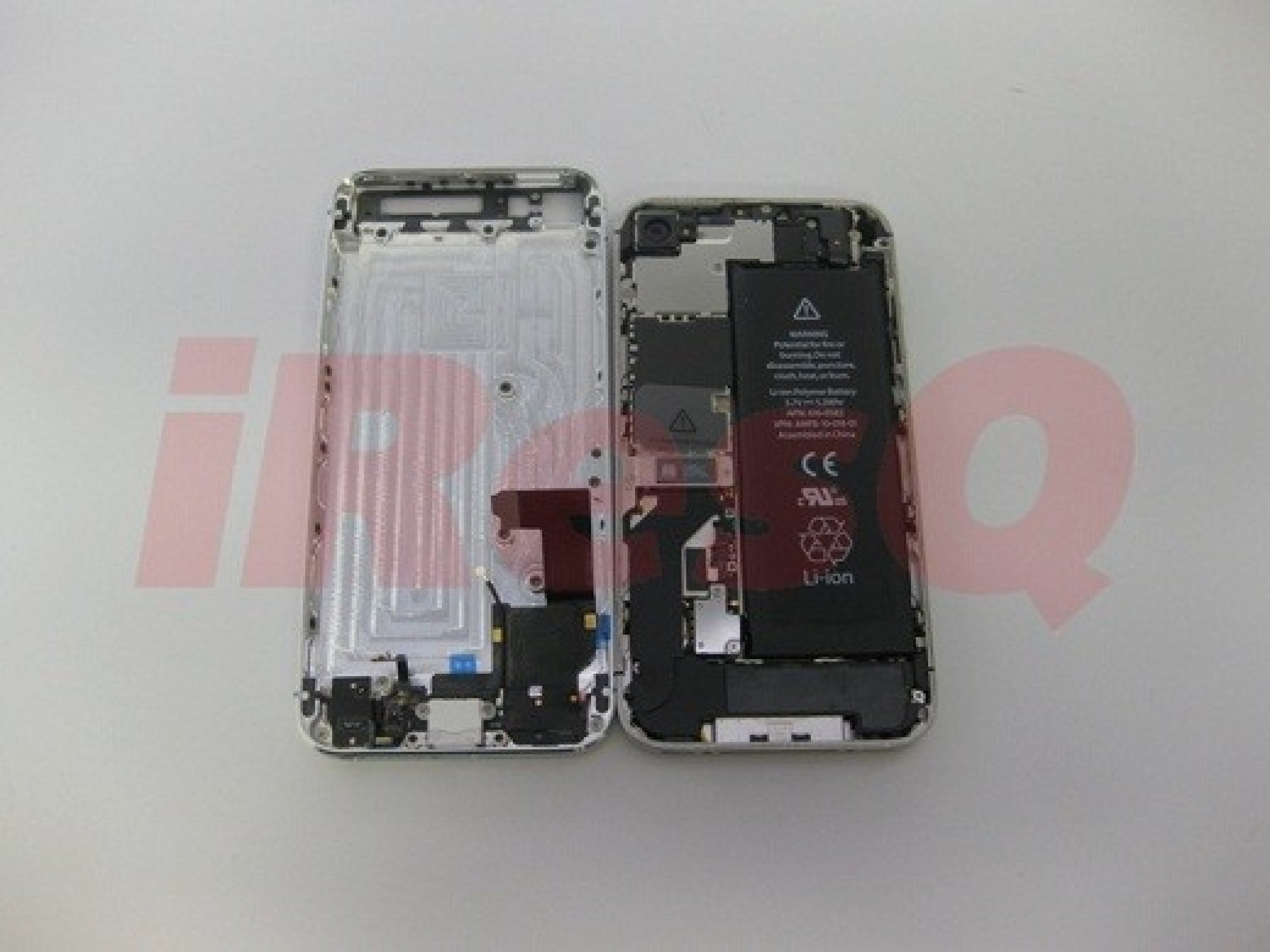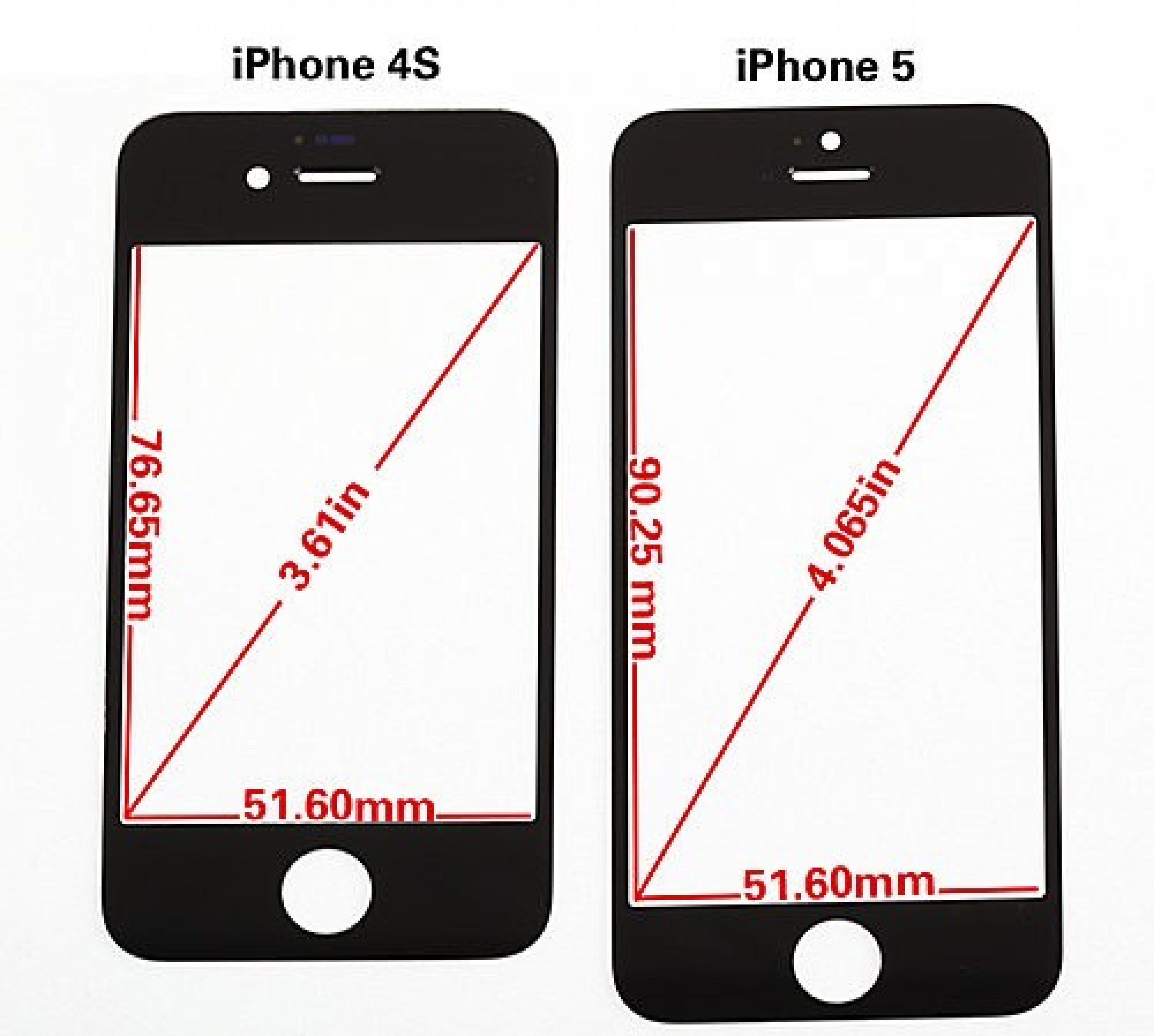Apple iPhone 5 Features: 5 Reasons The New Screen Could Be Big News [RUMORS]
Hype surrounding the iPhone 5 continues to mount in the days leading up to Apple's media event, allegedly scheduled for Sept. 12, in which the Cupertino, Calif.-based computers company is expected to unveil a brand-new iPhone, among other new products.
While Apple will never officially confirm any of the features until the phone is unveiled, one difference most consumers are expecting is a bigger screen. Given the multitude of reports and allegedly leaked photos of iPhone 5 prototypes, Apple's sixth-generation smartphone will mark the first time an iPhone's screen stretches longer than 3.5 inches.
Before we explain why the screen is a big deal, here's what we know about the screen itself:
Back on Aug. 3, ETrade Supply posted a highly-detailed image and video comparison between the components in an iPhone 4S and components from an alleged iPhone 5 prototype; at the end of the month, a new report showed a higher-quality photo and video comparison of the iPhone 4S and the iPhone 5, but the consistency across the two reports was unmistakable. In all likelihood, the taller phone you see in this picture is Apple's iPhone 5.
Now, here are five reasons this new screen is going to make a huge difference in the overall iPhone experience.
1. Aspect Ratio: Both sites showed the iPhone 5 and iPhone 4S face plates side by side. Whereas the iPhone 4S measures 76.65 mm long and 3.61 inches diagonally, the iPhone 5 stretches those dimensions: The front plate of the new phone measures 90.25 mm long and 4.065 inches across.
The iPhone 5's width is identical to all previous-generation iPhones at 51.6 mm, likely for comfort reasons, but that's not what makes it important: The width and the new height of the iPhone combined creates a resolution ratio of about 16:9, which will allow for 1080p HD videos, TV shows and movies to be played in a beautiful widescreen format.
2. In-Cell Touch Panels: ETrade Supply examined the differences in thinness between the iPhone 4S and the alleged iPhone 5 prototype. Whereas the iPhone 4S face plate measured exactly 1 mm, the iPhone 5's front plate is 0.1 mm thinner at just 0.9 mm thick. This thinness makes sense: Apple had allegedly been looking to adopt in-cell touch panels manufactured by Sharp and Toshiba Mobile Display.
By effectively removing a layer between the multi-touch screen and the LCD display, these in-cell panels far outperform current "on-cell" touch screens. AUO Optronics, based in Taiwan, explains the difference:
"Compared to In-Cell technology, the conventional technologies have an additional sensing glass, which not only increases the overall thickness of the LCD, but also adds an extra lamination process step, translating to increased cost and relatively lower yield and reduced transmittance," the company said. "Compared to the traditional resistive touch control, in-cell voltage sensing not only has the above advantages, but also is superior in that its sensitivity less subjective to environment changes, no calibration mechanism required, and capability of supporting multiple-point touch control."
AUO Optronics adds that the touch sensors are vastly improved in in-cell technologies, but they're still powerful enough to resist scratches on the touch panel, resulting in "a longer product lifetime."
"In contrast to the traditional resistive and digitizer touch controls, since a mere light touch can be picked up, the operation interface of In-cell charging sensing is more humanized," AUO said. "In addition, charging sensing not only can support multiple point touch control, but further support pen writing at present to meet different requirements by the clients."
Best of all, adding in-cell touch panels to make the screen thinner could potentially give Apple a...
3. Lag-Free Multi-Touch Screen. In mid-March, Microsoft engineers unveiled a lag-free touch screen that responds to the finger's touch in less than one millisecond. Current Apple devices only have a minor lag with their touchscreens, but this minor adjustment would make users feel like they're really touching their work, drawing a picture, or handwriting a note. Apple has proven to us time and again that simplicity is the key to an enjoyable experience, but speeding up the touchscreen would make the already-popular iPhone into the best touchscreen experience ever.
A touchscreen that created the sensation of textures would be an incredible piece of technology, but we're hoping Apple completes the puzzle with one important piece of technology from Microsoft.
4. Crack-Proof Glass: By making the phone's screen significantly thinner, Apple leaves itself much more room to add additional technologies to the glass, including one patent that the company was awarded back on Nov. 15 for a glass solution that makes it less susceptible to cracks.
The patented solution for crack-proof glass uses the same alumino silicate glass solution used in the iPhone 4 and 4S (identical to Gorilla Glass), but by treating the glass with potassium and sodium ions, the iPhone's screen is able to achieve greater compression thresholds on the surface and edges of the glass.
Apple also included a handy feature that will appeal to everyone who's ever dropped their iPhone: The patent calls for a shock mount to be placed between the glass and the body of the device, which will instantly inflate if the device senses it's falling. If the iPhone's internal accelerometer senses it's falling, an actuator within the device sucks in the cover glass as it accelerates to the ground, protecting it from damage.
5. Advanced Haptics: This feature may be a long-shot to make it in the iPhone 5, but if Apple managed to pull this one off, this next iPhone could be the best smartphone experience ever created.
By making the phone's screen process thinner and stronger, Apple could potentially implement one of its patents for a new haptics feedback system, which would allow users to physically interact with their content by touching it - an experience which would be accomplished with sensors and actuators working simultaneously.
Apple's multi-tiered system is extremely sophisticated: Using several layers of elastic screens stacked on top of each other, Apple's screen can produce 3D buttons or objects to interact with, as well as give texture to images, like topographical maps, but only when they're needed. This technology is currently being explored by another company, Tactus Technology, which created a video to explain how it all works.
Similar to Tactus' work, Apple's haptic system can respond to and create different types of actions, including vibration, net displacement, bending, deforming, or any combination of those elements. The technology can also work with a secondary display screen or audio system, which would be useful if Apple ever builds its iTV, but the system can also be applied to flexible organic light emitting diode, or OLED, screens. This advanced haptics system would also work with almost every portable Apple device, including iPhones, iPod Touch devices, iPads, MacBooks, and even TVs, video projectors and e-Ink displays.
The Screen Is The Experience
Apple purposefully doesn't endow its iOS devices with many buttons on the hardware; Apple likes the screen to be the true portal to the content inside. For that reason, Apple puts a significant amount of effort into making the screen strong, stable, and beautiful.
It's possible we could see some, all, or none of these above technologies that Apple has allegedly been working on; after all, Apple won't debut a new technology unless it felt it was totally ready. Advanced haptics and crack-proof glass could possibly still be in the labs, but the patents and data show that Apple could make both of these technologies a reality in the next iPhone.
Back in May, Apple's lead designer Sir Jony Ive told Shane Richmond of the Telegraph that he believes Apple's current project could be his finest hour.
"It's a really tough [question]," Ive said. "A lot does seem to come back to the fact that what we're working on now feels like the most important and the best work we've done, and so it would be what we're working on right now, which of course I can't tell you about."
It wouldn't be surprising if the iPhone was his favorite project, especially if he was able to build any of these incredible technologies directly into the screen.
We don't know which features Apple will pack into the new iPhone 5 - it may be revolutionary, it may not be - but whatever Apple allegedly debuts on Sept. 12, consumers will be talking about this phone and its incredible features for the foreseeable future. At least until the iPhone 6.



© Copyright IBTimes 2025. All rights reserved.






















